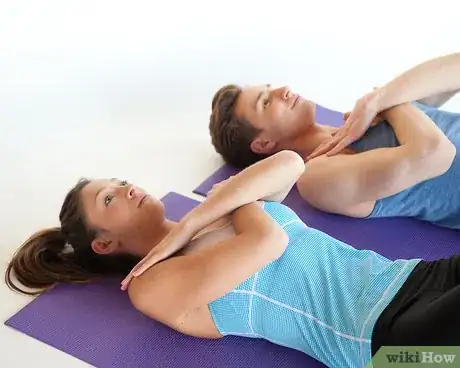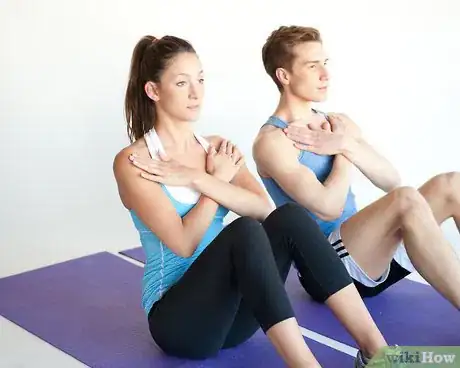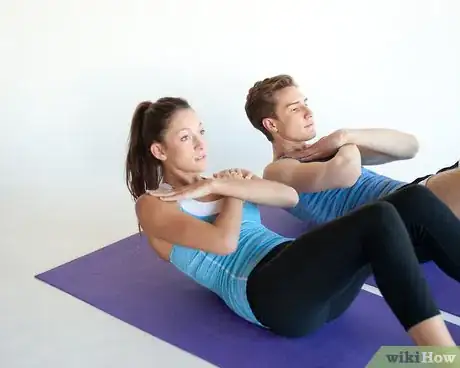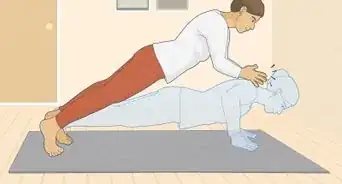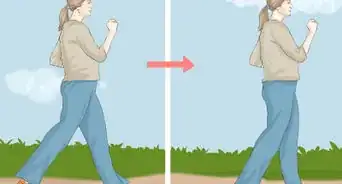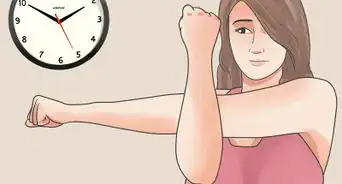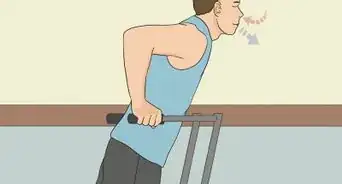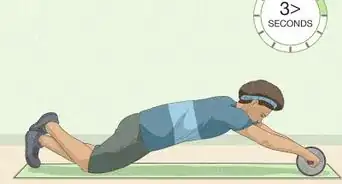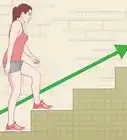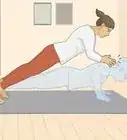wikiHow is a “wiki,” similar to Wikipedia, which means that many of our articles are co-written by multiple authors. To create this article, 11 people, some anonymous, worked to edit and improve it over time.
wikiHow marks an article as reader-approved once it receives enough positive feedback. In this case, 94% of readers who voted found the article helpful, earning it our reader-approved status.
This article has been viewed 165,830 times.
Learn more...
Doing sit-ups is a quick way to get stronger abdominal muscles. However, they must be done properly to avoid any injury to your spine and the neck and head muscles. In addition, sit-ups are about using the abdominal region (the abdominals). Therefore, close attention must be paid to ensuring that you are not compensating by using other parts of your body to perform sit-ups, as this will diminish the effectiveness of the sit-up and may cause injury to your body. It is not as harsh as it sounds - always, always focus on the abs and you are most of the way there.
Steps
-
1Have your knees bent and the balls of your feet and heels placed flat on the ground.
-
2Place your hands on opposing shoulders, so that your arms are crossed over your chest, or behind your head. This allows you a central rising point.Advertisement
-
3Tighten your abdominal muscles gently by drawing in your belly button to your spine.
-
4Keeping your heels on the ground and your toes flat to the ground, slowly and gently lift your head first, followed by your shoulder blades. Focus your eyes on your bent knees, all the while gently contracting the abdominal muscles. Pull up from the floor until you are at a ninety-degree angle, or when the elbows are on, or past, the knees.
-
5Hold the position for a second. Slowly bring the torso back to the floor but try to keep it slightly elevated off the ground. This means not to place your back flat to the ground but to keep a slight, yet relaxed, arch.
-
6Repeat steps 3-5 for the remainder of the exercise. Only do two to three if you are a beginner and slowly build up the amount over time, as your strength increases. Then hopefully you will lose weight, too!
Warnings
- Avoid doing sit-ups if you have been diagnosed with osteoporosis. Bending your spine in the sit-up position places increased stress on your bones and can put you at risk for a stress fracture.⧼thumbs_response⧽
- Do not commit the common mistakes of sit-ups:
- If you choose to get your hands out of the way by putting them behind your head, make sure you don't push your head forward while lifting your torso. There is a natural tendency to do this since it helps you lift up and the tendency will increase as your abs get tired. However, the push on your head will strain the muscles in the neck. If you deal with your arms in another way, still try to keep your head out of the exercise.
- Don't try to put your forehead on your knees. The higher you come off the ground the better, but only to a certain extent. If your back is starting to curl (namely, you could be considered as being in a humpback position if you were standing), you will be placing too much strain on your lower back.
- If you can't keep your feet on the ground and haven't secured them properly, you will be spending extra effort to do so during the sit-up. Unfortunately, this effort will originate in the thighs, which isn't the target of a sit-up. In some people the thighs might give up before the abs, rendering the whole exercise completely useless.
⧼thumbs_response⧽ - Keep in mind that the only way to build muscle is to push the muscle beyond its endurance limits. But if you do so many sit-ups to the point that you start to feel a stinging sensation on your abdominals, you have done too much. Your form will start to deteriorate and you won't be performing a proper sit-up.⧼thumbs_response⧽

